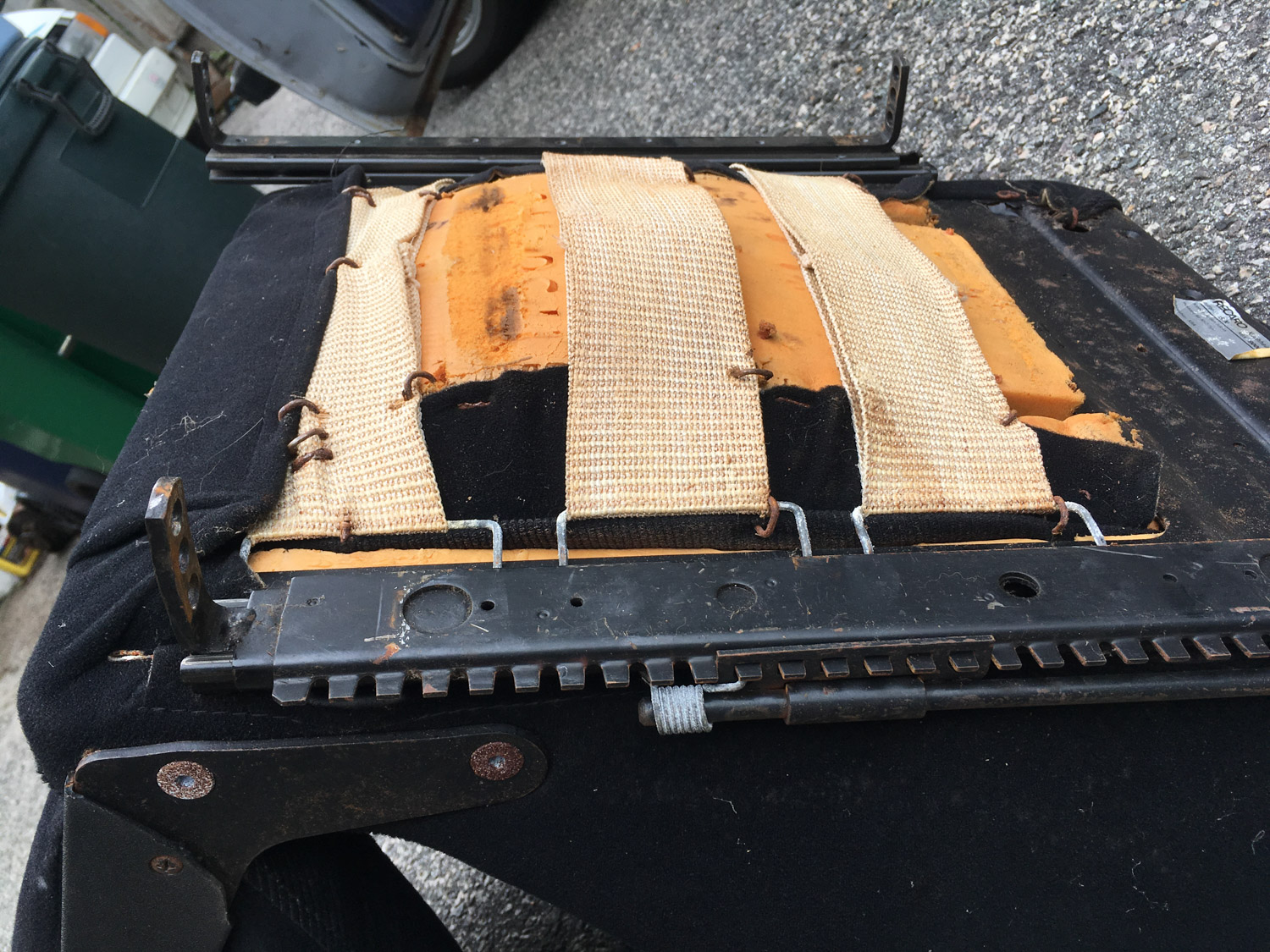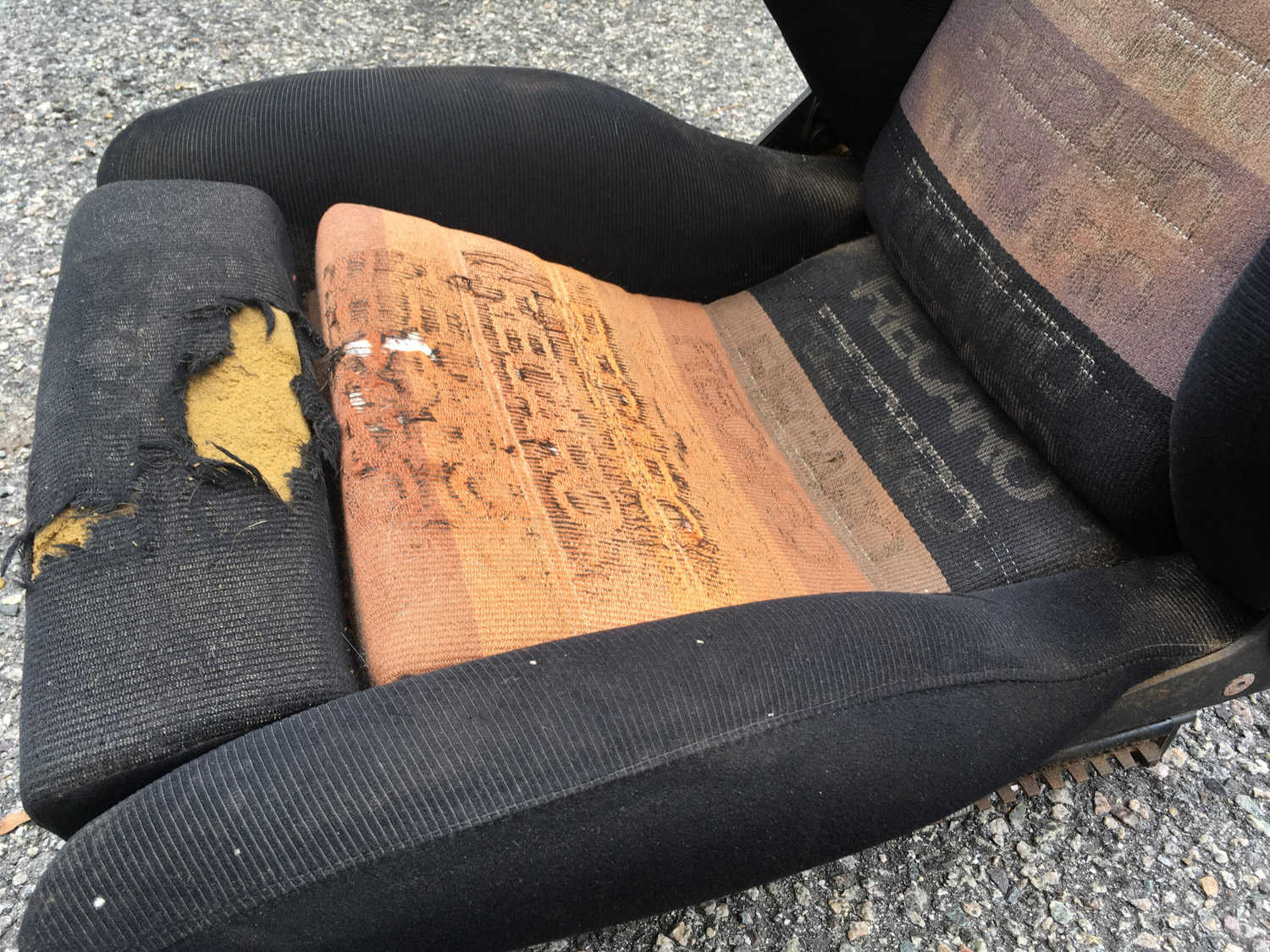Media | Articles
Get off your butt and fix that saggy Recaro seat
If you’ve ever driven a car with saggy seats, you know my pain. I’ve written a number of stories about my experience in buying back Bertha, the 1975 BMW 2002 that I sold to a friend in the early 1990s and that sat for 26 years. During that time, the exterior, interior, and mechanical systems deteriorated badly, and over the past few months, I mechanically rejuvenated the car, and now I drive it regularly. I left the body and seats in their distressed states, as they’re part of the story of the history of the car.
However, one thing that increasingly bothered me was the fact that the base of the Recaro driver’s seat was sagging badly, making me feel like I was falling backwards into a well. I looked beneath the seat, and the problem was completely apparent: The three pieces of rubberized webbing that support the bottom seat cushion had lost their elasticity and were no longer holding up my weight. I could push the foam back into position with my hand so it looked like it was at the proper level, but as soon as I sat in the seat, it immediately sagged again.

I tend to gravitate toward simple inexpensive solutions to problems, so I initially thought about perhaps taking up the slack in the straps with a few safety pins, or sewing them shorter. However, when I found out that the proper Recaro seat straps were only about $35, I simply ordered them.
This is a very easy and very satisfying repair. First, measure the seat straps. You can probably do this, as I did, without even removing the seat. They come in 2-inch and 3-inch versions. The cost difference between them is minor.
Marketplace
Buy and sell classics with confidence
Remove the seat from the car, set it down somewhere clean, and tip it over. The straps are held in place at both ends by clips whose ends go through holes in the seat frame. Tip the clips to detach them, then slide them out of the ends of the straps.

Thread the clips through the ends of the new strap and install it. Then move on to the next strap.

The only complication is the hog rings, those circular piercing clips used to hold seat upholstery and foam to each other and to metal seat frames. On my seat, there were two hog rings holding each strap to the foam. I removed those and did not reinstall them, as I think nothing good can come of a hog ring sunk into 30-year-old foam. But I did reinstall the rings holding the end clips to the seat frame, as well as those connecting the seat back fabric to the rear-most strap.

The whole thing, including removing and reinstalling the seat, took less than 30 minutes, and half of that was probably dealing with the hog rings.
If I may digress for a moment, part of the joy of troubleshooting and repairing cars is the fact that, in a world of intractable problems, you can identify one problem, and fix it, completely. You can enter into a repair process that has a clear beginning, a clear end, and clear success. This was that sort of a repair, in spaces. My butt was sagging in the seat before the repair, and 30 minutes later, it wasn’t.
So, if you have a saggy Recaro, search online or eBay for “Recaro Seat Straps,” allocate half an hour, and not only will you fix the seat, but you’ll achieve your little bit of daily mechanic Zen.

***
Rob Siegel has been writing the column The Hack Mechanic™ for BMW CCA Roundel magazine for 30 years. His new book, Just Needs a Recharge: The Hack Mechanic™ Guide to Vintage Air Conditioning, is now available on Amazon. You can also order a personally inscribed copy here.


